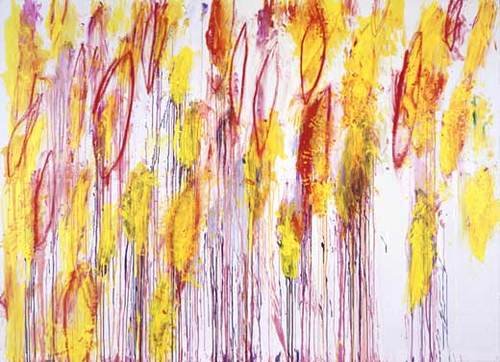Cy Twombly
dal 26/6/2008 al 27/9/2008
Segnalato da
26/6/2008
Cy Twombly
Prado Museum, Madrid
The Lepanto paintings. In the year 2001, Harald Szeemann commissioned Cy Twombly to make a work that would be relevant to the Plateau of Humankind exhibition organized by the Venice Biennale. The American painter created a large narrative cycle dedicated to the famous naval battle that took place, in the Gulf of Lepanto on the 7th of October 1571. Coinciding with this show is on view "Snayers, Callot and Battle Paintings", a series of images of military conflict that locate Twombly's work within the context of a pictorial traditional focused on the subject of war.

In the year 2001, Harald Szeemann commissioned Cy Twombly to make a work that would be relevant to the Plateau of Humankind exhibition organized by the Venice Biennale, melancholic farewell of modernity in the threshold between two centuries. For this exceptional event, the American painter created a large narrative cycle dedicated to the famous naval battle that took place, in the Gulf of Lepanto on the 7th of October 1571, between the Ottoman Turks and the so-called “Holy League”, a Christian coalition formed by Spain, Venice and the Papacy.
Beyond its historical significance as an allied victory over Turkish expansionism, the Battle of Lepanto became a fascinating subject for visual narration by contemporary artists supported by the winners: Titian, Tintoretto, Veronese and Cambiaso, among others. An important number of these artistic consequences of Lepanto arrived in Spain. In fact, Twombly first became interested in this subject thanks to depictions of the naval battle represented in tapestries based on paintings made for Philip II by Luca Cambiaso and now at the Escorial.
The presence of Lepanto in Spain, specifically at the Museo del Prado, updates the historical importance of large narrative cycles of paintings, especially the series of battles that forma fundamental core of the Royal Collection. At the same time, Twombly’s extraordinary frieze introduces a new link into that fabulous sequence of the “Venetian tradition”, majestically embodied at the Prado since the early Hapsburg’s relationship with Titian and now reaches our time with unbroken continuity.
---
Snayers, Callot and Battle Paintings
Coinciding with the presentation of Lepanto by Cy Twombly, the Museo del Prado is exhibiting at Room D a series of images of military conflict that locate Twombly’s work within the context of a pictorial traditional focused on the subject of war and on which Twombly has drawn for his own work. This display can be seen in Room D of the Jerónimos Building (next to the Lepanto room).
As part of this complementary display the Museum is exhibiting the etching The Siege of Breda by Jacques Callot for the first time since its acquisition in 2004, as well as two paintings by Snayers that have recently been cleaned and restored.
The Prado’s collections are rich in paintings on the theme of war, revealing the different reactions that this subject has aroused in artists. The selection currently on display presents the model developed by the artist from Lorraine, Jacques Callot (1592-1653) and the way this model was followed by other artists such as Pieter Snayers (1592-1667). These depictions of battles include figures and anecdotal episodes in the foreground planes that bring the viewer closer to the daily life of the combatants. They then broaden out perspectivally to offer panoramic views with details of the sieges and conquered towns. Such images thus fulfilled a propagandist role on behalf of the military commanders involved, who were almost invariably members of the aristocracy.
Callot’s large print of The Siege of Breda, consisting of six joined sheets, is a view of the siege of Breda that took place from September 1624 to June 1625. It offers a minutely detailed description of the armies and fortified towns with their bastions, combined with a portrait in the foreground of the engineer Cantagallina who directed the siege, and a self-portrait of Callot.
The two battles in Snayers’ paintings took place during the war between the kingdoms of Spain and France between 1635 and 1659. Entitled The Siege of Gravelines and Assault on Aire-sur-la-Lys, they were probably commissioned from the artist by the Archduke Leopold William, cousin of Philip IV of Spain and Governor General of the Spanish Netherlands.
Image: Cy Twombly, Lepanto I, 2001. Udo und Anette Brandhorst Stiftung
Museo Nacional del Prado
Calle Ruiz de Alarcón 23. Madrid 28014



